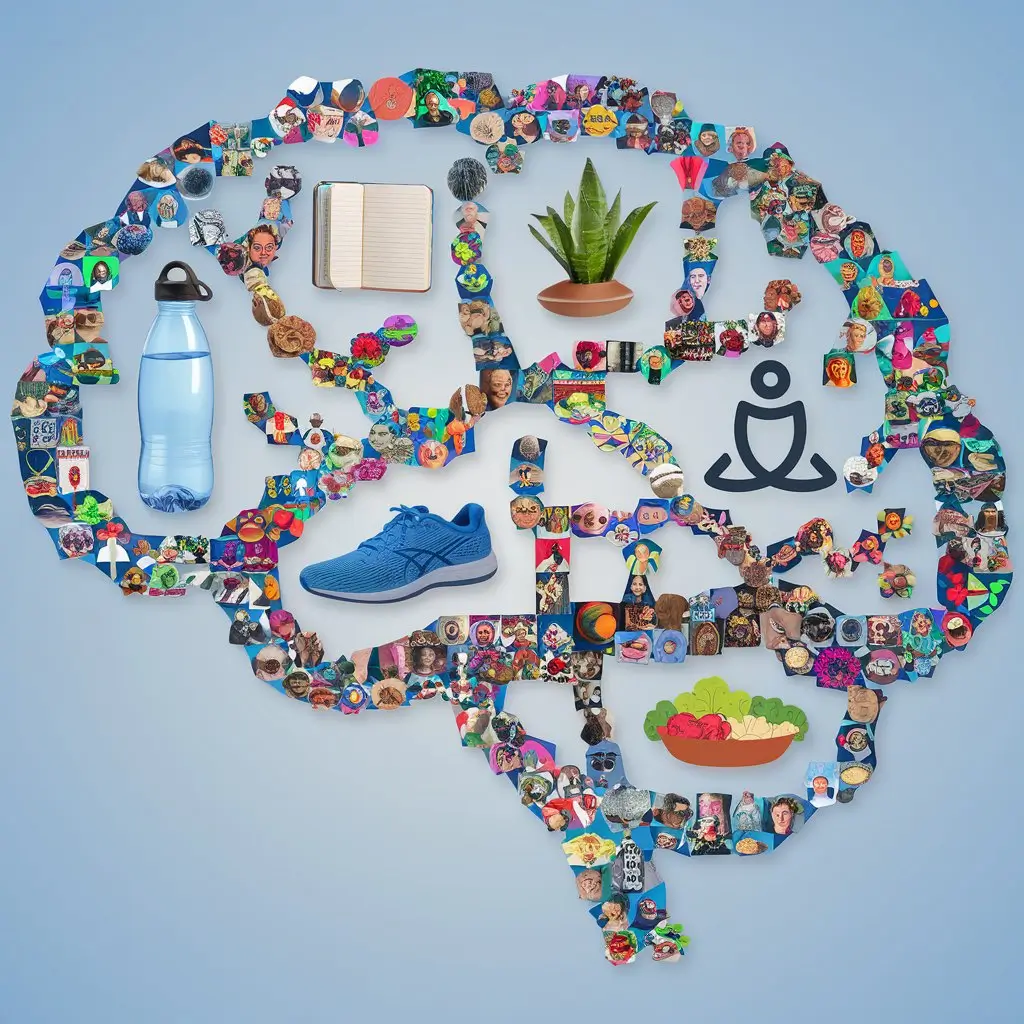In the hustle and bustle of modern life, the idea of making significant changes can often feel overwhelming. However, small actions, known as micro-habits, can lead to substantial improvements in our lives. Micro-habits are tiny, actionable behaviors that are easy to implement and sustain, making them a powerful tool for personal development. This article will explore examples of micro-habits and provide practical strategies for incorporating them into your daily routine.
What are Micro-Habits?
Micro-habits are the tiny, seemingly insignificant actions we can take that require minimal effort but can lead to significant improvements over time. These micro-habits are designed to be easily integrated into our daily routines, making them accessible for anyone looking to enhance their life without feeling overwhelmed.
Explanation of Micro-Habits
- Small, Actionable Behaviors: Micro-habits focus on small actions that can be completed in a minute or less. For instance, instead of committing to a 30-minute workout, a micro-habit might be doing a set of 10 push-ups or taking a 1-minute stretch break. This simplicity makes it easier to start and maintain these habits without the pressure of larger commitments.
- Easy to Implement and Sustain: Because micro-habits are small, they can be easily woven into your existing routine. They don’t demand significant time or energy, making it less likely for individuals to feel discouraged or give up. This ease of implementation is one of the key reasons they are so effective.
Difference Between Micro-Habits and Larger Habits
Micro-habits differ from larger habits in several key ways:
- Scalability: Larger habits often require extensive planning and dedication. In contrast, micro-habits are scalable; you can start with one small action and gradually increase its complexity or frequency as you gain confidence.
- Immediate Gratification: Micro-habits can provide immediate feelings of accomplishment. Completing a small task generates a sense of success, which can motivate individuals to continue building on those small wins over time.
- Lower Resistance: The psychological barrier to starting a micro-habit is significantly lower than that of a larger habit. When faced with the prospect of a major lifestyle change, many people experience anxiety or resistance. Micro-habits, however, are less intimidating and encourage action rather than inaction.
Benefits of Adopting Micro-Habits
- Simplicity: The beauty of micro-habits lies in their simplicity. They can be as effortless as taking a moment to breathe deeply or writing down one positive thought. This simplicity allows individuals to integrate them seamlessly into their lives without feeling burdened.
- Immediate Impact: Micro-habits often yield quick results. For example, drinking a glass of water in the morning can immediately hydrate your body and kickstart your metabolism. These small victories can boost motivation and reinforce the desire to continue making positive changes.
- Foundation for Larger Changes: Micro-habits can serve as stepping stones toward larger lifestyle modifications. For instance, someone who starts by walking for five minutes a day may gradually increase their activity level, eventually leading to a more robust exercise routine. This gradual approach reduces the risk of burnout and enhances long-term sustainability.
- Enhanced Focus on Process Over Outcome: Micro-habits shift the focus from lofty goals to the daily actions that lead to those goals. Rather than obsessing over the end result, individuals learn to appreciate the journey, fostering a growth mindset that values progress over perfection.
- Building Momentum: As individuals successfully incorporate micro-habits into their lives, they create a sense of momentum. This can lead to a snowball effect, where the success of small habits encourages the adoption of more significant changes, creating a positive feedback loop of growth and development.
Examples of Micro-Habits
Micro-habits can be applied across various aspects of life, from health and productivity to mindfulness and relationships. Here are some practical examples of micro-habits that you can easily incorporate into your daily routine:
Health and Fitness
- Drinking a Glass of Water First Thing in the Morning: Starting your day with hydration can jumpstart your metabolism, improve digestion, and enhance energy levels. This strategy works as an efficient method which advances total health benefits.
- Taking a 5-Minute Walk After Meals: Instead of sitting immediately after eating, a brief walk can aid digestion and help regulate blood sugar levels. It’s a great way to incorporate physical activity into your day without dedicating much time.
- Doing One Minute of Stretching Each Day: Taking just a minute to stretch can relieve tension and improve flexibility. It can be as simple as reaching for your toes or doing a few shoulder rolls, making it easy to fit into your schedule.
Productivity
- Writing Down One Task to Accomplish Each Morning: This micro-habit helps you prioritize your day and creates a sense of direction. By focusing on a single task, you can enhance your productivity without feeling overwhelmed by a long to-do list.
- Setting a Timer for 10 Minutes of Focused Work: Using the Pomodoro technique, you can break your work into manageable intervals. Committing to just 10 minutes of focused work can help you overcome procrastination and build momentum.
- Organizing Your Workspace for 5 Minutes: A clutter-free environment can significantly boost focus and productivity. Spending just a few minutes tidying up your desk can create a more conducive space for work and creativity.

Mindfulness and Mental Well-Being
- Practicing Deep Breathing for 1 Minute: Taking a moment to focus on your breath can reduce stress and enhance mental clarity. Deep breathing exercises can be done anywhere and require minimal time, making them an excellent micro-habit for mindfulness.
- Journaling One Positive Thought Daily: Writing down a positive thought or gratitude each day can shift your mindset toward positivity. It encourages you to focus on the good in your life, enhancing overall well-being and happiness.
- Meditating for 2 Minutes Before Bed: A brief meditation session can help calm your mind and prepare you for sleep. Incorporating this micro-habit into your nightly routine can improve sleep quality and promote relaxation.
Relationships
- Sending a Quick Message to Check In on a Friend: A simple text or message to ask how someone is doing can strengthen relationships and show that you care. This micro-habit fosters connection and can brighten someone’s day.
- Complimenting Someone Once a Day: Offering a genuine compliment can uplift others and create a positive atmosphere. It takes only a moment but can significantly impact both the giver and receiver’s mood.
- Practicing Active Listening in Conversations: Focus on truly hearing what others are saying rather than preparing your response. This micro-habit enhances communication and strengthens relationships by showing respect and understanding.
Financial Habits
- Saving $1 a Day: This micro-habit can gradually build your savings without requiring a significant financial commitment. By saving a small amount daily, you can develop a habit of saving that can lead to larger financial goals.
- Reviewing One Expense Daily: Taking the time to reflect on a single expense each day can increase your financial awareness. It helps you understand your spending habits and encourages more mindful financial decisions.
- Setting Aside Change in a Jar: Collecting spare change can add up over time. This simple act of saving can teach you the value of small contributions while creating a visual representation of your progress.
How to Incorporate Micro-Habits into Daily Life
Integrating micro-habits into your daily routine can be an effective way to foster positive change without feeling overwhelmed. Here are practical strategies to help you successfully incorporate these small actions into your life:
Start Small
- Choose One or Two Micro-Habits: Instead of trying to overhaul your entire routine at once, select one or two micro-habits that resonate with you. This focused approach allows you to dedicate your energy and attention to establishing those habits before adding more.
- Gradually Increase Complexity: Once you feel comfortable with your initial micro-habits, you can gradually increase their complexity or frequency. For instance, if you start with a 5-minute walk, you might eventually aim for a 10-minute walk or incorporate additional exercises.
Use Triggers
- Associate Micro-Habits with Existing Routines: Identify existing habits in your daily life that can serve as triggers for your new micro-habits. For example, if you want to practice deep breathing, you might do it right after brushing your teeth each morning. This association makes it easier to remember and perform the new habit.
- Set Reminders or Alarms: Utilize technology to your advantage by setting reminders or alarms on your phone. A simple notification can prompt you to engage in your chosen micro-habit at designated times throughout the day.
Track Progress
- Use a Habit Tracker or Journal: Keeping a record of your micro-habits can help you monitor your progress and stay motivated. The tracking system can be either an app on your device or you may utilize a bullet journal to mark your daily progress toward your micro-habit completion.
- Each small achievement should receive praise regardless of its magnitude. Each successful completion of a micro-habit should lead to celebration because it strengthens the behavior while increasing your motivation. The accomplishment can be recognized through small rewards like your preferred coffee drink coupled with sharing the news with your close friends.
Stay Consistent
- Commit to Daily Practice: Consistency is key when it comes to forming habits. Make a commitment to practice your micro-habit daily, even if it’s just for a minute. Over time, this consistency will help solidify the habit in your routine.
- Be Patient and Flexible with Setbacks: Understand that setbacks are a natural part of the habit formation process. Missing a couple of days should not result in self-criticism. Instead, reflect on what led to the setback and adjust your approach if necessary. Flexibility will help you maintain a positive mindset and keep moving forward.
Adjust as Needed
- Evaluate Effectiveness and Enjoyment: Regularly assess how your micro-habits are working for you. Are they helping you achieve your goals? Do you enjoy them? If a particular micro-habit feels burdensome or ineffective, don’t hesitate to adjust it or swap it out for something that better suits your lifestyle and preferences.
- Modify Micro-Habits to Fit Personal Preferences: Personalization is crucial when it comes to habit formation. If you find that a micro-habit isn’t fitting well into your life, consider modifying it. For example, if you want to practice gratitude but find journaling tedious, try expressing your gratitude verbally to a friend instead.
Create a Supportive Environment
- Surround Yourself with Supportive People: Share your goals with friends or family members who can encourage and support your efforts. Having a support system can provide motivation and accountability as you work to incorporate micro-habits into your life.
- Optimize Your Environment: Arrange your physical space to make it easier to practice your micro-habits. For instance, if you want to drink more water, keep a water bottle on your desk or set it by your bedside to remind you to hydrate.

Overcoming Challenges
While incorporating micro-habits into your daily life can be rewarding, it’s not without its challenges. Understanding these obstacles and developing strategies to overcome them can significantly enhance your success in forming lasting habits. Here are common challenges you might face and practical solutions to address them:
Common Obstacles
- Lack of Time: In our busy lives, finding time for new habits can feel impossible. Many people believe they need large blocks of time to make meaningful changes, which can lead to frustration and abandonment of their goals.
- Forgetfulness: With so many responsibilities and distractions, it’s easy to forget to practice a new micro-habit. People may start with good intentions but struggle to remember to follow through consistently.
- Motivational Slumps: Initial enthusiasm for new habits often wanes over time. As the novelty wears off, it can become increasingly difficult to stay motivated, leading to procrastination or complete abandonment of the habit.
- Self-Doubt: Many individuals struggle with negative self-talk and self-doubt, questioning their ability to maintain new habits. This internal dialogue can create mental barriers that hinder progress.
- Perfectionism: The desire to execute habits perfectly can lead to disappointment and frustration. If individuals miss a day or don’t perform a habit perfectly, they may feel like they’ve failed altogether.
Strategies to Overcome These Challenges
- Time Management Techniques:
- Prioritize Your Day: Start by identifying your most important tasks and allocating time for your micro-habits accordingly. Use tools like calendars or planners to schedule dedicated time slots for these small actions.
- Incorporate Habits into Existing Routines: Find ways to integrate micro-habits into your daily activities. For example, if you want to stretch more, do it while watching TV or during a work break. This creates a seamless blend of old habits and new practices.
- Use Reminders and Alarms:
- Set Up Notifications: Utilize your smartphone or other digital devices to set reminders for your micro-habits. A gentle nudge can serve as a prompt to engage in the behavior you want to establish.
- Visual Cues: Place sticky notes or visual reminders in strategic locations (e.g., on your bathroom mirror or computer screen) to keep your goals at the forefront of your mind.
- Build a Support System:
- Accountability Partners: Share your goals with friends, family, or colleagues who can help keep you accountable. Regular check-ins can provide motivation and encouragement.
- Join a Community: Consider joining online forums or local groups focused on personal development. Engaging with others who share similar goals can boost your motivation and provide support.
- Cultivate a Growth Mindset:
- Back your habits by accepting that failure happens frequently during habit creation. Realize that success from growth matters more than the pursuit of flawlessness. Small achievements should be recognized while unanticipated problems become opportunities to learn.
- Practice Self-Compassion: Be kind to yourself when you encounter obstacles. Remind yourself that forming new habits takes time and that it’s okay to stumble along the way.
- Adjust Expectations:
- Start Small and Be Realistic: Set achievable goals that align with your current lifestyle. If your initial micro-habit proves too challenging, don’t hesitate to scale it back to ensure it remains manageable.
- Reassess and Adapt: Regularly evaluate your micro-habits to determine their effectiveness and relevance. If something isn’t working, be open to modifying or replacing it with a different habit that better suits your life.
Conclusion
Micro-habits offer a powerful way to create meaningful change in your life. By incorporating small, manageable actions into your daily routine, you can foster personal growth and well-being over time. Start with a few micro-habits today, and watch how these small changes can lead to significant transformations in your life.



























